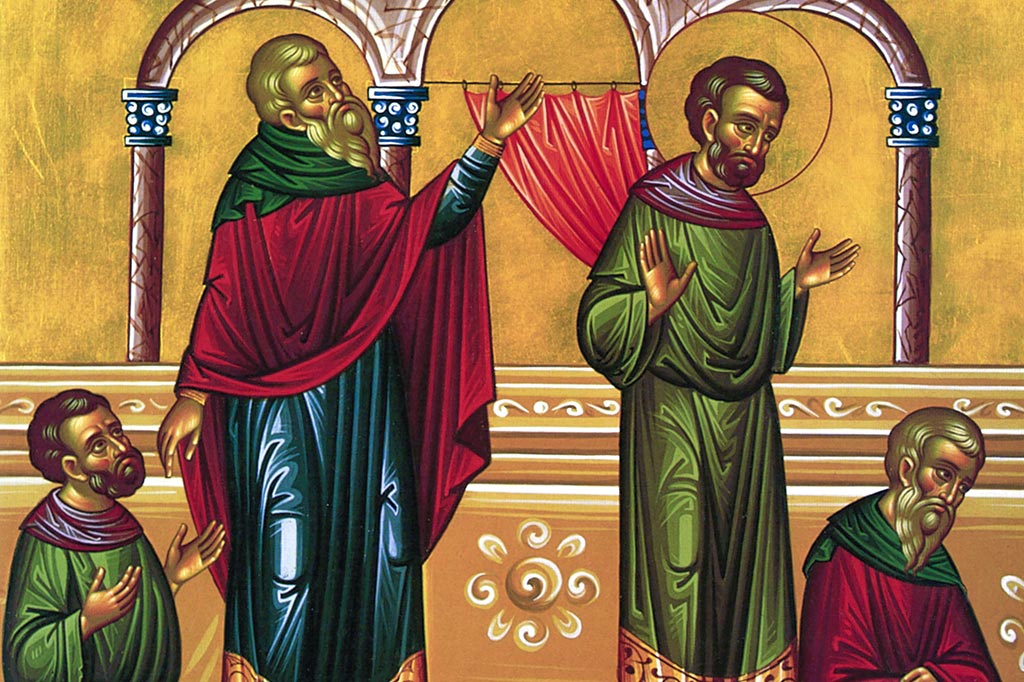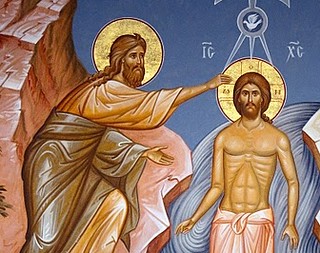O Come, let us worship and bow down, let us kneel before the Lord, our Maker!
Psalm 95:6
The first word that most people think of when they think of Lent is probably “fasting.” The first think I think of when I think of Lent is actually “worship.” I probably celebrate 30% of the services I do annually in the 50 day period that comprises Great Lent and Holy Week. From a worship standpoint, it is a time like no other, both for the amount of service and the variety of services. For most people, worship consists of the Divine Liturgy and the occasional sacrament (baptism, wedding or funeral). Most people do not attend Orthros (or Matins, the service before the Divine Liturgy), and many parishes do not do daily services or weekly Vespers. By and large, we are not exposed to the pretty large anthology of church services. Great Lent not only reminds us of the importance of frequent worship, by offering us more opportunities to worship. It reminds us that there are many services outside of the Sunday Divine Liturgy that we are used to.
Many of us are familiar with the service of the Salutations to the Virgin Mary. Many people have an attachment and devotion to the Virgin Mary. And that is a good thing. On the first five Fridays of Great Lent, we offer a devotional service to her called the “Salutations”. Each of the first four Fridays, we read 6 stanzas of salutations and on the fifth Friday, we read all 24, in a service called the Akathist Hymn. These services of devotion to the Virgin Mary are actually not really Lenten services. They do not have a Lenten or penitential character to them. Most priests wear blue for them, instead of the more solemn purple and black. Most likely, these services are in Lent because the Feast of the Annunciation (March 25) falls in Lent and these services are placed in close proximity to that feast.
Divine Liturgy continues to be celebrated on Sundays of Great Lent. Each Sunday has a different theme—Sunday of Orthodoxy, St. Gregory Palamas, Holy Cross, St. John of the Ladder and St. Mary of Egypt. On each Sunday, the Divine Liturgy of St. Basil is offered instead of the Divine Liturgy of St. John Chrysostom. The principle difference between these two Liturgies are the prayers of the priest which in many churches are silent, so we actually don’t recognize any difference. (Here is a teaser for what is coming to the Prayer Team next week: Reflections on the Prayers of the Divine Liturgy of St. Basil—stay tuned, that’s our Lenten unit, and I’m so excited to share these with you!).
Because the central thing we do in the Orthodox Church is receive the Eucharist in the context of the celebration of the Divine Liturgy, because this is even more important when we are fasting, and because the Church wants to reflect a more somber tone during Great Lent, the Divine Liturgy of the Pre-Sanctified Gifts (or Pre-Sanctified Liturgy) came into use. This service is not a full Divine Liturgy. It is a Vesper service with Holy Communion appended to the end, using Holy Communion that was “pre-sanctified” the previous Sunday and saved until the Pre-Sanctified Liturgy. This affords us an opportunity to receive Holy Communion more frequently during Great Lent—Pre-Sanctified Liturgy is held on Wednesdays (and some church on Fridays as well) and is more solemn that our Sunday Divine Liturgy. The priest vests in purple or dark vestments, the lighting is usually dim, the service is at the end of the day so that we can retire to our homes in peace and not have to jump back into work.
The other Lenten service that we do is called the Great Compline. Compline is a series of prayers that people offer sometimes privately, or in monasteries corporately before retiring to bed. Great Compline is done only Great Lent and is a series of Psalm readings and prayers of repentance. What I personally like most about the Great Compline is that there is not much sensory input. There is very little chanting, very little movement, just stillness and the sound of one person reading. In the world these days we are overstimulated in our senses. Great Compline slows down our stimulation and brings more of a sense of peace.
As you make your plan for Great Lent this year, consider one of the following ideas:
1. Go to an extra service each week. Maybe you go to Pre-Sanctified Liturgy every week, or you rotate which service you go to each week.
2. Go to each service (Compline, Pre-Sanctified, Salutations) once during Lent, so you experience each one at least once a year. This means you go to three extra services the entire Great Lent.
Of course, we should still go on Sundays to Divine Liturgy, and as we get deeper into Great Lent, we need to make a plan for Holy Week, setting aside time to experience the moving Holy Week journey, which for us Orthodox is meant to be like a “revival” (the Protestant Churches, many of them, have one or two week revivals, where congregants listen to presentations and worship every day for a week or two, in order to “revive” and augment their faith). We have one of these on the schedule every year in the Orthodox Church—it is called Holy Week.
Worship is central to our practice of Orthodoxy and thus it is central to marking the period of Great Lent. Make plans now to have worship be part of your Lenten experience.
Lord, thank You for the opportunity we have so frequently to connect with You and with one another in worship. Help us to understand You better through worship. Help us to connect with one another through worship. During this Lenten period, help me to be efficient in my tasks so that I leave ample time to worship. Slow down my thoughts in worship, so that my heart and my soul can be renewed in Your holy temple. Give strength to my priest (his name) in these services and be with all those who will be worshipping with me. Amen.
Practical idea for Lent: Set a goal to worship each Sunday of Great Lent, and either a) an additional time each week, or b) go to each of the Lenten services once during Great Lent.



